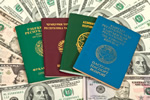What will the new Philippine ID card mean for potential expats?

What will the new Philippine ID card mean for potential expats?
On the fourth attempt, the Philippine National ID card is expected to be brought in between mid-2020 and mid-2022. It’s the government’s fourth attempt to introduce the national ID card, but how will it effect the large number of expatriate workers and the even larger number of retirees?
It would seem the new card, known as the PhilSys ID card, will replace the existing ACR-1 ID card, but expats may wonder why this is necessary. However, even this aspect of the launch isn’t yet set in tablets of stone as, according to the relevant new law, the PhilSysy card will not replace existing government-granted ID cards. It’s also not yet certain how much the new card will cost, as a fee will be demanded but the exact cost has yet to be determined and announced. For potential expats who’re wondering whether they’ll have to pay twice for two cards, it’s now ‘watch this space’ time.
The new cards can be applied for at PSA provincial and regional offices, local civil registry offices and a good number of other governmental locations, and the necessary biometrics are much the same as those for the original ID card. What’s clear at present about the launch is that very little is actually clear, making projecting its effects on expatriates somewhat of a lottery. However, expats and those planning to arrive sometime soon are hoping it’ll be a positive step forward on the part of the government.
One thing's or sure - for those still considering relocating to the Philippines from certain far less expat-friendly Southeast Asian hubs, it can’t be any worse than the hoops they’re expected to jump through at the present time.
Related Stories:
- Is Kuwaitization the unintended result of the oil price crash? - July 20, 2020
- Expats in Malaysia still banned from overseas travel - July 17, 2020
- HSBC Asia to cut back on internal expat relocations - July 16, 2020
- Tips on integrating for newly-arrived expats - July 15, 2020
Latest News:
- Tips on a trouble-free relocation as an expat overseas - July 20, 2020
- Expats find peace in the covid-19 refuge of Dahab town - July 20, 2020
- Is Kuwaitization the unintended result of the oil price crash? - July 20, 2020
- Expats unhappy abut changes to Korean points-based visa system - July 17, 2020
- Chiang Mai and Bangkok no longer bargain locations for expats - July 17, 2020
- Expats in Malaysia still banned from overseas travel - July 17, 2020
- Vietnam welcomes expats to its safe, affordable lifestyle - July 16, 2020
- Asian tiger economies reach out to expats in Hong Kong - July 16, 2020
- HSBC Asia to cut back on internal expat relocations - July 16, 2020
- Tips on integrating for newly-arrived expats - July 15, 2020


